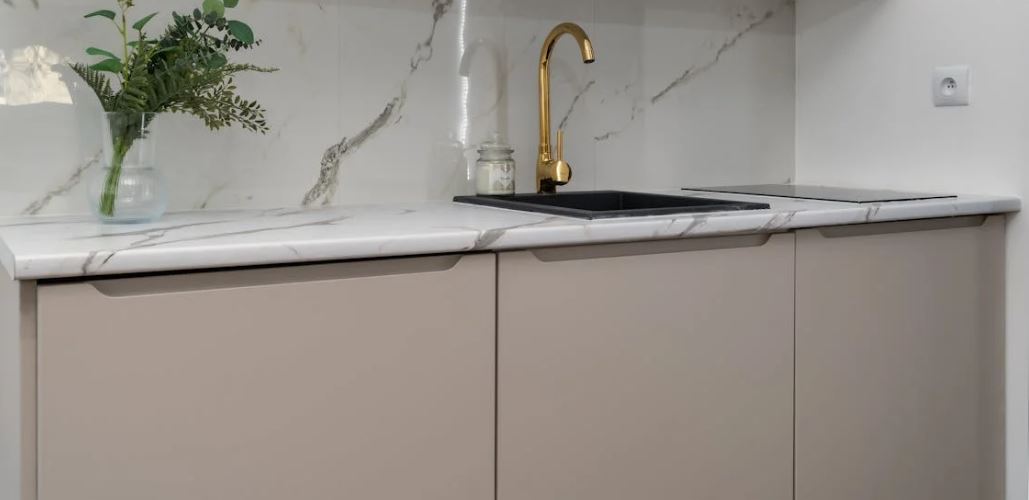Kitchens are the hub of the home. They also tend to be the most frequently-used room, not only for cooking and eating but (if space allows) for entertaining and relaxing too. A well-designed kitchen calls for a combination of pleasing aesthetics and functional design.
Those with smaller kitchens might opt to remodel in order to extend the available space in their kitchen, but where this isn’t possible, you can still renovate a smaller kitchen to create a space that uses the available space while retaining a stylish look.
Layout
When looking at kitchen remodeling, think from the ground up. Layout is one of the first considerations, but while there are a number of options to choose from, not all are suited to smaller spaces.
While smaller spaces are unable to accommodate a kitchen island in the same way that larger U-shaped kitchens can, galley and L-shaped styles are both great options, maximizing the amount of available surface and storage space.
Storage Solutions
Open shelving can be useful (especially for those who tend to forget what they have in stock), although the visual clutter of labels can make an already-small space appear even more crowded.
Keeping rows of products behind closed doors creates a cleaner look (especially if you use handleless cabinets), while allocating specific cabinets to different foods helps keep things organized even when they’re out of sight.
Going Up
One solution in kitchens with limited floor space is to use the walls instead: mounted fold-out tables (which can act as additional prep space), vertical shelving and cabinetry as well as clever built-in features like pull-out racks and wall-mounted storage can all be used to save space while maximizing storage.
The same goes for appliances: rather than using traditional stoves or refrigerators, having these items built into the wall can help reduce the overall “bulk” of a kitchen, streamlining everything and making things easily accessible.
Appliance Placement
To optimize the placement of your appliances in any kitchen (including smaller ones), use the “work triangle”, a term referring to the placement of your stove, sink and refrigerator).
Keeping these appliances in close proximity (while considering how you might naturally move about) can help maintain a sense of flow in your kitchen, allowing for easier prep, cooking and clean-up.
Light and Bright
Using lighter colors in your kitchen, adding a mirror to one end of the room and allowing in as much natural light as possible won’t alter the amount of space you have, but they can make the room appear bigger and brighter.
Adjustable blinds tend to look less cluttered than curtains while allowing light to filter into the room, while using lighter tones on the cabinets and walls (uniform colors tend to work best) helps to visually open up the space.
Maintenance and Upkeep
While smaller rooms are generally easy to clean, one downside is that they also tend to get messy just as quickly. Cleaning as you go (in addition to a nightly tidy) can help to prevent clutter building up.
Developing these habits is good practice in kitchens of any size, but in smaller kitchens it’s even more of a necessity. Add in some space-saving tweaks and a little visual trickery, and you have the recipe for a kitchen remodel that works wonders, even in a smaller room.

































